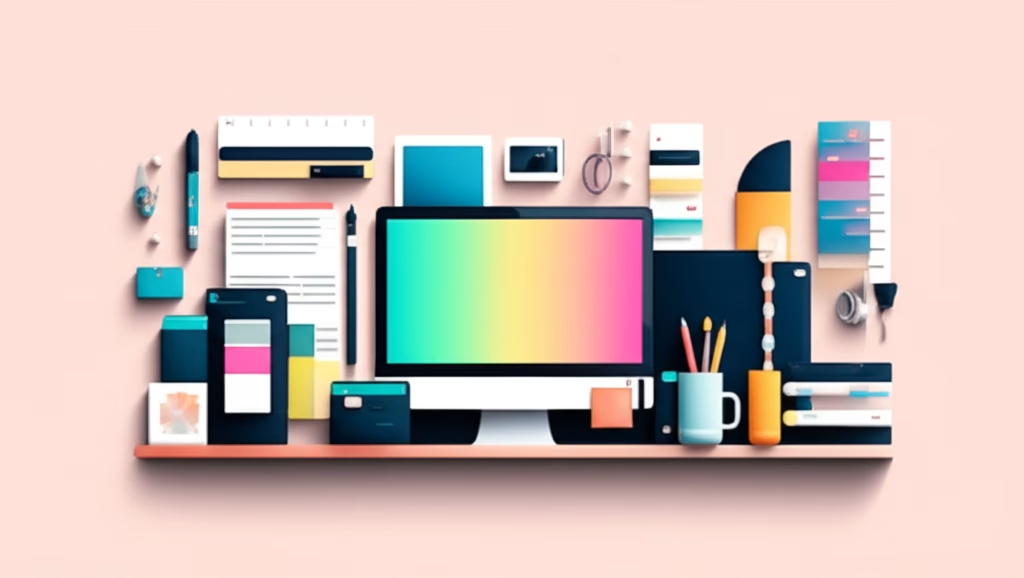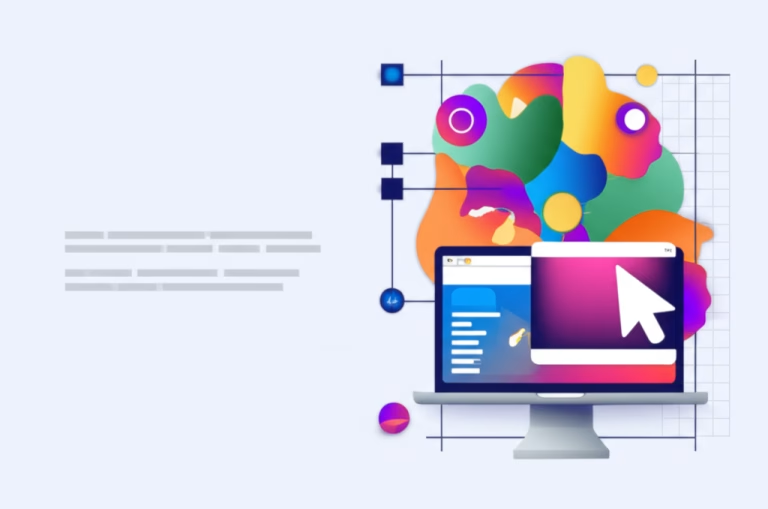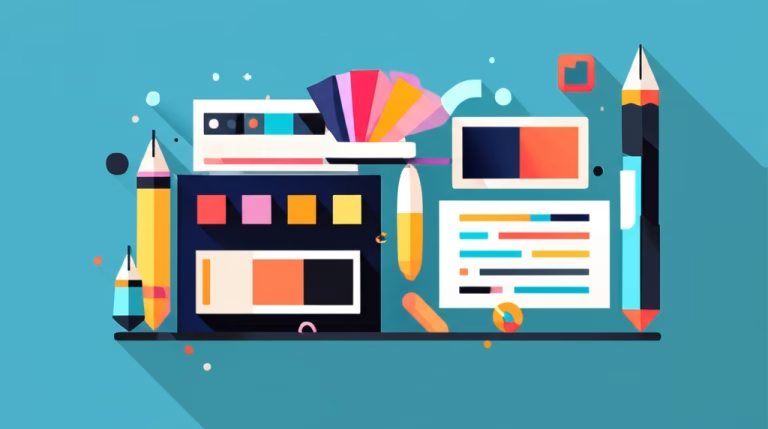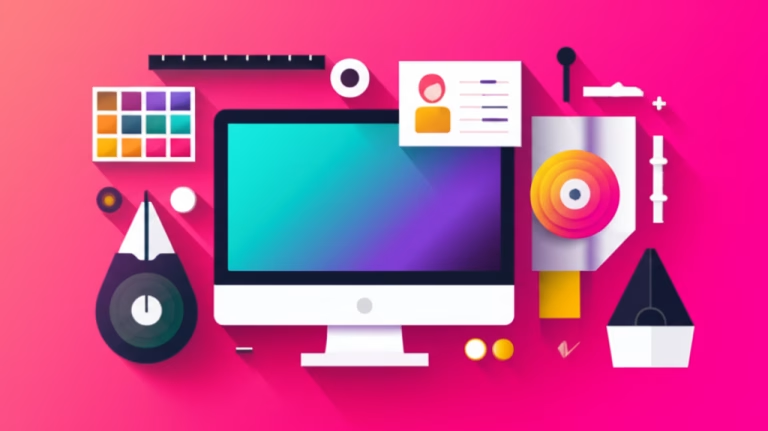Understanding References and Moodboards: A Beginner’s Guide
Introduction
Ever feel lost staring at a blank canvas, unsure where to even begin? That’s where references and moodboards come to the rescue! They’re not just for seasoned pros; they’re essential tools for any aspiring designer. Think of them as your creative compass, guiding you towards a cohesive and inspiring design. In this post, we’ll explore what they are, why they matter, and how to create your own stunning moodboards and use references effectively.
Table of Contents
What is a Reference?
A reference, in the context of design, is any source of inspiration or information that you use to inform your creative process. It can be anything from a photograph, a color palette, a piece of typography, a website, or even a physical object. References provide concrete examples and ideas to draw from, helping you to visualize and develop your design concepts. They are essential for ensuring accuracy, consistency, and innovation in your work.
What is a Moodboard?
A moodboard is a visual collage of ideas, images, textures, colors, and typography that represents the overall aesthetic and feeling you want to achieve in your design project. It’s a powerful tool for communicating your vision to clients, collaborators, and even yourself. Think of it as a visual story that captures the essence of your design concept. It helps to set the tone, style, and direction of your project before you dive into the details.
Why are References and Moodboards Important in Design?
References and moodboards are crucial for several reasons. First, they provide a solid foundation for your design, ensuring that your ideas are grounded in reality and aligned with your goals. Second, they help you to communicate your vision effectively, preventing misunderstandings and ensuring that everyone is on the same page. Third, they spark creativity and inspire new ideas, pushing you beyond your comfort zone and helping you to create truly unique and compelling designs. Finally, they save time and effort by providing a clear direction for your project, reducing the need for revisions and rework.
Basic Principles / Rules / Tools of References and Moodboards
Gathering References
Relevance: Choose references that are directly related to your project’s goals and target audience. Don’t just pick things that look pretty; make sure they serve a purpose.
Variety: Explore a wide range of sources to broaden your perspective and discover new ideas. Look beyond your usual haunts and venture into unfamiliar territory.
Organization: Keep your references organized and easily accessible. Use folders, tags, or a dedicated reference management tool to avoid getting overwhelmed.
Creating Effective Moodboards
Theme: Define a clear theme or concept for your moodboard. This will help you to stay focused and create a cohesive visual story.
Balance: Strive for a balance of different elements, such as images, colors, textures, and typography. Avoid overcrowding your moodboard with too much information.
Hierarchy: Establish a visual hierarchy to guide the viewer’s eye and highlight the most important elements. Use size, color, and placement to create emphasis.
Tools: Explore different tools for creating moodboards, both digital and physical. Pinterest, Adobe Creative Cloud Express, Canva, and even traditional corkboards are all great options.
Color Palette Selection
Color Palette: Choose a color palette that reflects the desired mood and tone of your design. Consider the psychological effects of different colors and how they can influence the viewer’s perception.
Typography Choices
Typography: Select fonts that complement your overall design aesthetic and are appropriate for your target audience. Experiment with different font pairings and consider factors such as readability and legibility.
Common Mistakes in References and Moodboards (and How to Avoid Them)
Creating effective references and moodboards takes practice. Here are some common pitfalls to watch out for:
Mistake: Overwhelming yourself with too many references.
How to Avoid: Be selective and focus on quality over quantity. Curate your references carefully and only include the most relevant and inspiring examples.Mistake: Creating a moodboard that is too generic or lacks a clear direction.
How to Avoid: Define a specific theme or concept for your moodboard and ensure that all elements contribute to that central idea.Mistake: Neglecting to consider your target audience when selecting references and creating your moodboard.
How to Avoid: Research your target audience and understand their preferences, values, and needs. Tailor your references and moodboard to resonate with them.Mistake: Using low-quality images or poorly chosen typography in your moodboard.
How to Avoid: Always use high-resolution images and select fonts that are legible and visually appealing. Pay attention to detail and ensure that your moodboard looks professional and polished.
Step-by-Step: How to Apply References and Moodboards in Your Projects
Ready to put your newfound knowledge into practice? Here’s a step-by-step guide to incorporating references and moodboards into your design workflow:
Step 1: Define Your Project Goals: Clearly define the objectives, target audience, and desired outcomes of your design project. This will help you to focus your reference gathering and moodboard creation efforts.
Step 2: Gather Inspiration: Explore a variety of sources to gather references that align with your project goals. Look at websites, magazines, books, photographs, and even real-world objects. Don’t be afraid to think outside the box and draw inspiration from unexpected places.
Step 3: Create Your Moodboard: Use your references to create a visual collage that captures the overall aesthetic and feeling you want to achieve in your design. Experiment with different layouts, colors, textures, and typography until you’re satisfied with the result.
Step 4: Refine Your Design: Use your moodboard as a guide to refine your design concepts. Ensure that all elements are consistent with the overall vision and that your design effectively communicates your message to the target audience.
Step 5: Iterate and Improve: Don’t be afraid to experiment and iterate on your design based on feedback and new insights. References and moodboards are living documents that can evolve as your project progresses.
Frequently Asked Questions (FAQ) about References and Moodboards
Q: What’s the best tool for beginners to create moodboards?
A: Canva is a great option for beginners. It’s user-friendly, has tons of templates, and offers both free and paid versions.
Q: How many references should I include in my moodboard?
A: There’s no magic number, but aim for a balance. Enough to convey your vision, but not so many that it becomes overwhelming. Focus on quality over quantity.
Q: Can I use physical objects in a digital moodboard?
A: Absolutely! Take photos of textures, fabrics, or anything else that inspires you and incorporate them into your digital moodboard.
Q: What if my client doesn’t like my moodboard?
A: That’s okay! Use it as a starting point for discussion. Ask them what they don’t like and what they would prefer. It’s all about collaboration.
Conclusion
References and moodboards are powerful tools that can elevate your design work from good to great. By understanding their purpose, following best practices, and avoiding common mistakes, you can harness their potential to create stunning and effective designs. So, gather your inspiration, unleash your creativity, and start building your own inspiring moodboards today!
Ready to take your design skills to the next level? Check out our article on Color Theory for Beginners!



